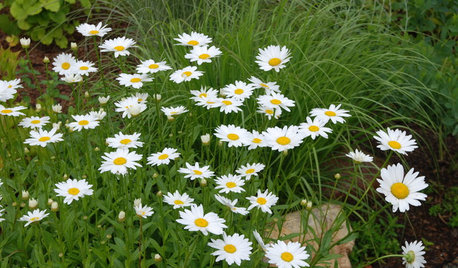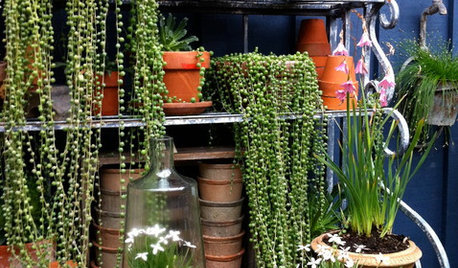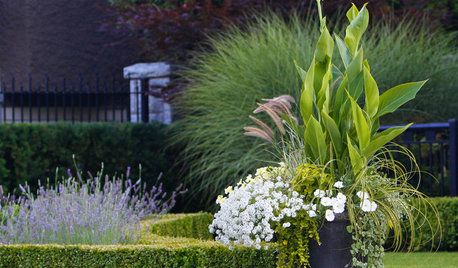cutting propagation
inulover (9A Inverness, Florida)
9 years ago
Related Stories

FLOWERSBest Cutting-Garden Beauties for Late Summer
Pick blooms bursting with color or in classic white for bouquets to give away or keep all to yourself
Full Story
LANDSCAPE DESIGNTry Slow Gardening for Some Unexpected Benefits
Why set your garden on the fast track? Here's how to relax and enjoy it in an entirely new way
Full Story
GARDENING GUIDESGreat Design Plant: Slipper Plant
Unthirsty succulent looks great all year and offers an unexpected surprise in fall
Full Story
HOUSEPLANTS8 Essentials for Healthy Indoor Plants
Houseplants add so much to our homes — and can thrive when grown in the right conditions. Keep these tips in mind
Full Story
WINTER GARDENINGExtend Your Growing Season With a Cold Frame in the Garden
If the sun's shining, it might be time to sow seeds under glass to transplant or harvest
Full Story
PLANTING IDEASWant a More Colorful, Natural Garden? Try a Perennial Meadow
Spend less time tending and more time taking in the sights by improving on Victorian and prairie garden designs
Full Story
GARDENING GUIDESA Beginner’s Guide to Growing Succulents
Their easy-care reputation is well-deserved, but a little TLC will turn succulents into star plants
Full Story
HOUSEPLANTSCascading Succulents Bring Fun Shapes to Your Indoor Garden
For eye-catching spillers with delicate beauty and minimal needs, it's hard to beat these 2 trailing houseplants
Full Story
GARDENING GUIDESGreat Design Plant: Cannas
Easy to grow and maintain, these showy, colorful plants are perfect for beginning gardeners
Full Story
MORE ROOMSOn Trend: Smart Solutions for Cords
Show those cables and wires who's boss with these clever solutions for the home office
Full Story








Michael AKA Leekle2ManE
Tom
Related Professionals
Cary Landscape Architects & Landscape Designers · Mountain Brook Landscape Architects & Landscape Designers · Piqua Landscape Architects & Landscape Designers · Brownsville Landscape Contractors · Costa Mesa Landscape Contractors · Inglewood Landscape Contractors · Kaysville Landscape Contractors · West Covina Landscape Contractors · Austin Decks, Patios & Outdoor Enclosures · Alvin Decks, Patios & Outdoor Enclosures · Beavercreek Decks, Patios & Outdoor Enclosures · Lacey Decks, Patios & Outdoor Enclosures · Lauderdale Lakes Decks, Patios & Outdoor Enclosures · Minneapolis Decks, Patios & Outdoor Enclosures · South Lyon Decks, Patios & Outdoor Enclosuresfawnridge (Ricky)
Teri64
Michael AKA Leekle2ManE
inulover (9A Inverness, Florida)Original Author
fawnridge (Ricky)
four (9B near 9A)